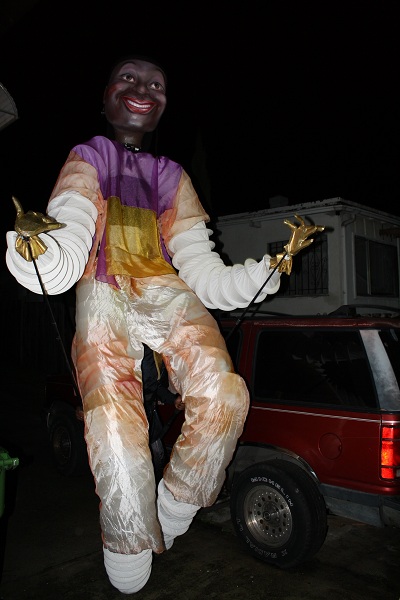This website uses cookies so that we can provide you with the best user experience possible. Cookie information is stored in your browser and performs functions such as recognising you when you return to our website and helping our team to understand which sections of the website you find most interesting and useful.

Stephen Tiffenson
Trinidadian Carnival arts and traditions
Trindad’s Carnival was born out of resistance; with the abolition of slavery in 1833, former slaves of French settlers and plantation owners celebrated with costumes that mocked their former masters. Characters rooted in these satirical beginnings can still be found at Carnival celebrations today. Dame Lorraine, for example, portrays an extravagantly dressed female French aristocrat, mimicking the tradition of early French settlers dressing up in elegant costumres and parading at private parties on Carnival’s Sunday night. Carnival costumes have evolved over time, and now include Kings and Queens, large-scale flamboyant costumes that celebrate that year’s Carnival theme.
Hailing from Sangre Grande, Trinidad, Stephen Tiffenson grew up immersed in all aspects of Carnival arts, including the construction of larger-than-life King and Queen puppets and the skillful dancing required to animate them. His music and dance skills became more refined as a touring member of North Eastern College Folk Performing Ensemble under the direction of acclaimed Winston Williams and John Cupid. After moving to the San Francisco Bay Area, Stephen founded Mas Makers Massive, a masquerade—or mas—troupe in 1983.
As a master artist in ACTA’s Apprenticeship Program in 2011, Stephen worked with his son and apprentice Christopher Tiffenson. The apprenticeship will focus on the construction of a traditional mas character, The Dame Lorraine. Their Dame Lorraine is a 20-foot-tall puppet that was used in 2011’s Carnival celebrations.




